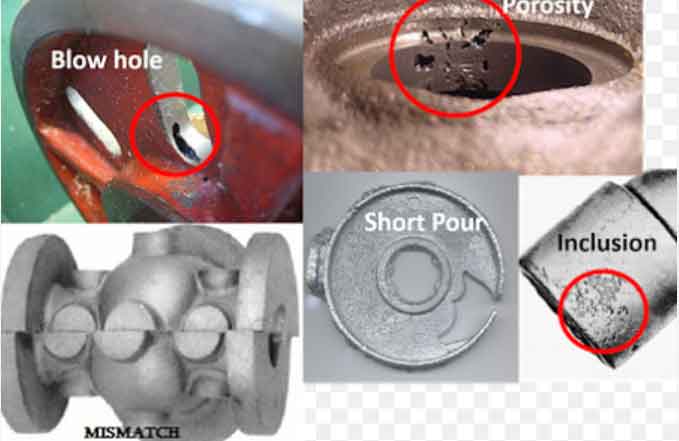
Casting defects can occur during the metal casting process, impacting the quality and functionality of the final product. To ensure defect-free castings, it is crucial to have effective inspection and correction practices in place. This article highlights best practices for inspecting castings and implementing appropriate corrective measures to address casting defects.
- Comprehensive Inspection:
- Visual Inspection: Conduct a thorough visual inspection to identify surface defects such as porosity, cracks, surface roughness, or dimensional variations.
- Non-Destructive Testing (NDT): Utilize NDT techniques such as radiography, ultrasonic testing, magnetic particle inspection, or dye penetrant testing to detect internal defects like inclusions, voids, or discontinuities without damaging the casting.
- Dimensional Measurement: Use precise measurement techniques to ensure the casting meets the required dimensional specifications.
- Root Cause Analysis:
- Identify the root causes of casting defects through systematic analysis. Consider factors such as process parameters, material properties, mold design, gating system, and environmental conditions.
- Utilize tools such as fishbone diagrams, Pareto analysis, or statistical analysis to determine the primary causes of defects.
- Engage cross-functional teams to gather insights and expertise for a comprehensive analysis.
- Corrective Measures:
- Process Optimization: Implement changes to process parameters, gating systems, or cooling rates to address the identified root causes and prevent future defects.
- Mold and Core Modifications: Make necessary modifications to the mold design, core assembly, or coatings to improve mold filling, reduce turbulence, and minimize defects.
- Material Control: Ensure proper handling, storage, and quality control of raw materials to prevent contamination and eliminate defects caused by impurities.
- Rework and Repair: Develop procedures for reworking or repairing defective castings based on the type and severity of defects. Perform these operations under controlled conditions to maintain quality.
- Scrap Analysis: Analyze scrapped castings to identify recurring defects and take corrective actions to prevent their occurrence in future productions.
- Continuous Improvement:
- Establish a feedback loop to capture lessons learned from inspection and correction processes.
- Maintain records of defect types, causes, and corrective actions for future reference and analysis.
- Regularly review and analyze data to identify trends and patterns, allowing for continuous improvement in the casting process.
- Training and Skill Development:
- Provide comprehensive training programs for casting operators, inspectors, and other personnel involved in the process to enhance their understanding of defect recognition, inspection techniques, and correction methods.
- Encourage a culture of continuous learning and knowledge sharing among the casting team to foster expertise and proficiency.
Effectively tackling casting defects requires a systematic approach involving comprehensive inspection, root cause analysis, and appropriate corrective measures. By implementing best practices for inspection and correction, manufacturers can improve casting quality, reduce defects, and enhance overall productivity. Continuous improvement and a focus on training and skill development are key to sustaining defect-free casting processes and achieving high-quality end products.
